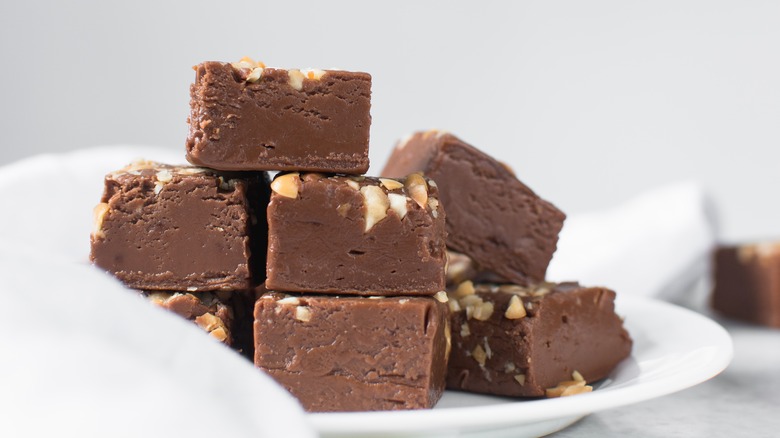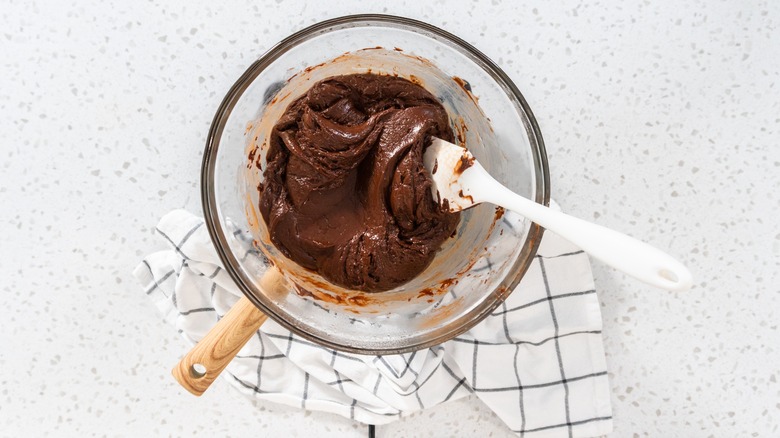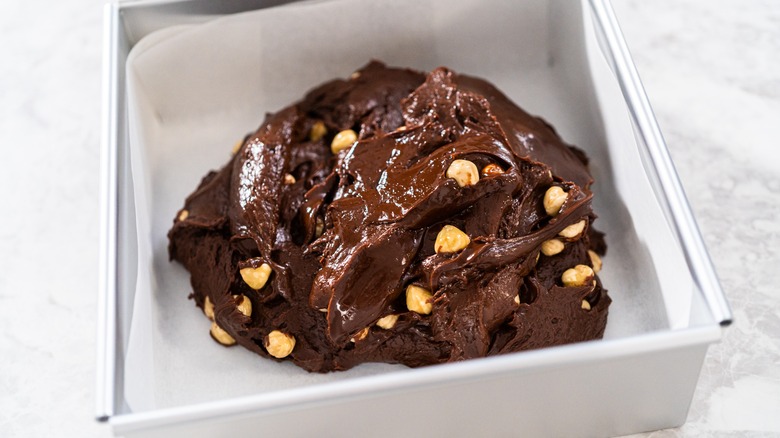The Exact Difference Between Chocolate Ganache And Fudge
When baking a warm batch of brownies, you might be hoping to get a fudgy consistency. You could also top the dessert off with a layer of ganache. At first glance, the preparation methods for fudge and ganache seem pretty similar, so how do you know which one to make?
The decision between which of the two desserts you'll make really comes down to how you plan to enjoy them. Fudge can be sliced up and enjoyed on its own or eaten in bite-sized pieces. Ganache, on the other hand, often complements other desserts as a filling or as a frosting on top of your cakes — which could be better for your brownies.
While fudge is a little more solid after setting up, ganache leans more towards a thicker liquid consistency. The texture difference between the two is owed to some extra ingredients added to the fudge. Ganache is pretty simple and can be made with only two ingredients, but fudge requires a little extra work and some additional components.
Both recipes start by melting chocolate
Both ganache and fudge begin by melting down some chocolate. Then, different ingredients are added, depending on what you want to make. Ganache only requires the addition of heavy cream to achieve its smooth, chocolatey consistency. Once it's whipped in, the sauce is ready to top off cakes, coat cake pops, or be used as a dip for fruits and cookies.
When you're making homemade fudge, however, you'll need a few more ingredients. Heavy cream can also be used in the recipe, though milk is an acceptable addition, too. You'll also need to mix in some butter and sugar. This thickens up the melted chocolate but allows it to remain soft and easy to eat. Since fudge and ganache start off being made the same, you could even whip up a batch of fudge from some leftover ganache.
Although the two are made from similar ingredients, they'll wind up with different consistencies. Ganache might solidify slightly but will remain smooth as a filling or icing. Fudge, meanwhile, will be soft enough to easily bite into while being solid enough to hold its shape after it has time to set up.
They require different cooling times
The cooling time is another big difference between the two. When working with ganache, you'll want to allow it to cool down just a little bit — aim for room temperature. This will allow it to set up enough to take on a slightly thicker consistency, but it will still be smooth enough to pour between cake layers or use as a dip.
Fudge, on the other hand, needs to be a little cooler to set up. Once your fudge has been prepared, pour it into a pan. If you want to add some toppings, you can sprinkle on some chopped nuts, candies, or sprinkles into the warm fudge mix. Then, place it into the fridge. The cooler temperatures will allow it to set up a little bit. As it's cut up into cubes, it will be a little more solid and will hold its shape better. It can even be frozen to last longer.
When debating between making ganache or fudge, consider what you'll be using the chocolate for. If you're planning to top off a batch of brownies, ganache is the way to go. However, if you prefer a sweet snack, mix up some fudge instead.


